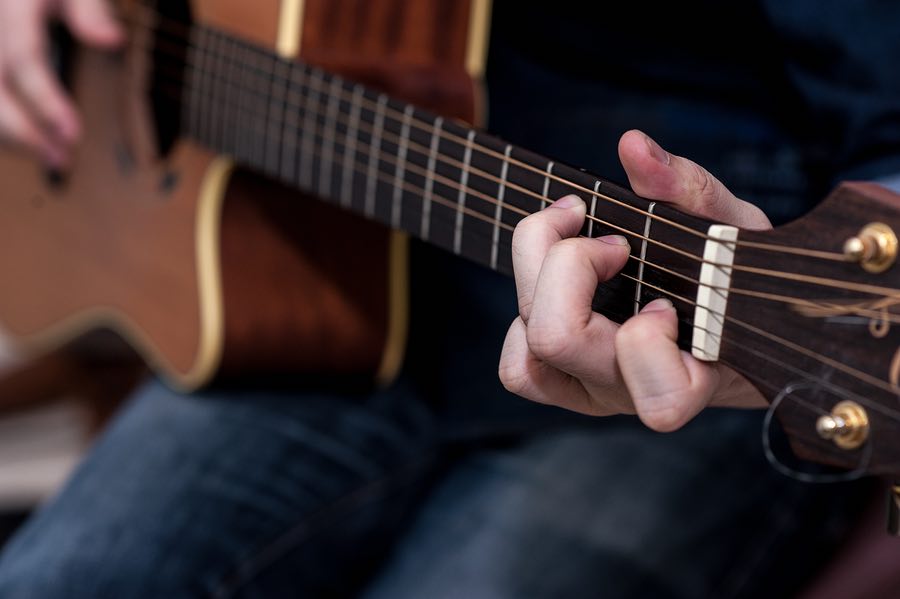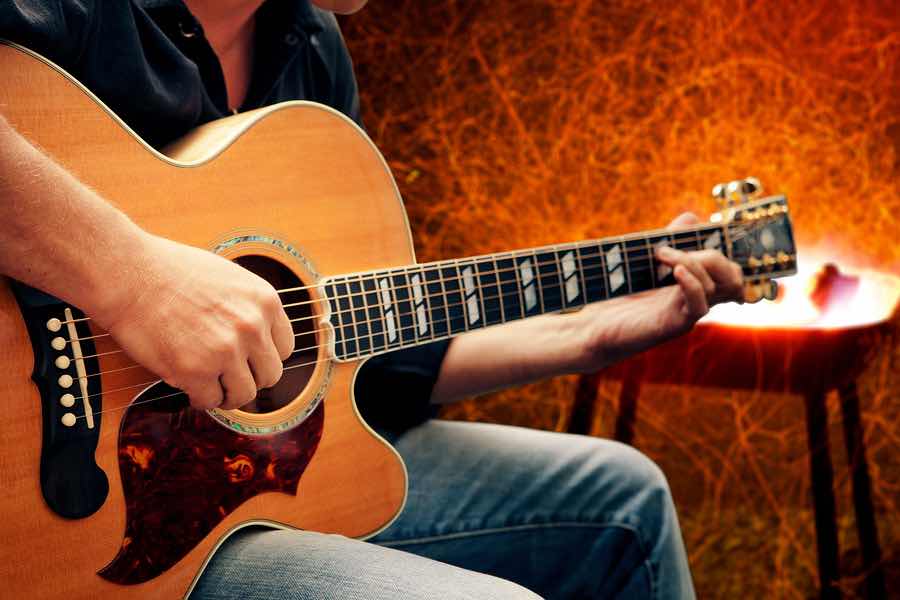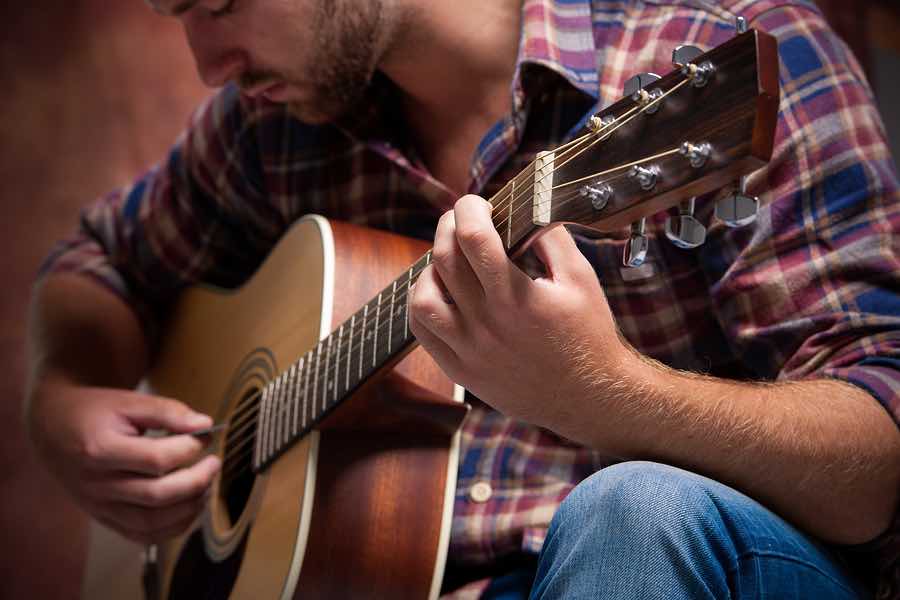
For most beginner guitar players the first goal is to play an easy song. To do this you need a couple of things:
A guitar, some chords, a strumming pattern and a smooth chord transition. The latter is the tricky part.
Changing chords while maintaining a steady rhythm pattern is the biggest challenge on the path of the beginner.
It’s often a struggle and hard work to make the chord transition sound any good. It almost feels like it’s something that can not be done, but nothing could be further from the truth.
A smooth transition of changing chords is something that does take time and effort, but with the right tips and tricks you will get there a lot faster and make it work as it should.
Time to get this baby up and running!
Here are 10 effective tips:
1 – Work on chords first
Before you start changing chords, first focus on perfecting your chords and chord movement.
– Learn the 8 most important chords for beginners
– Work on each chord separately.
– Visualize the shape of the chord.
– Place your fingers in the shape of the chord and try to move all your fingers simultaneously.
– Land all your fingers on the strings at the same time (press with the very tips of your fingers).
– Remove your hands from the strings and repeat the exercise 10 times.
– Try it with a different chord each time.


